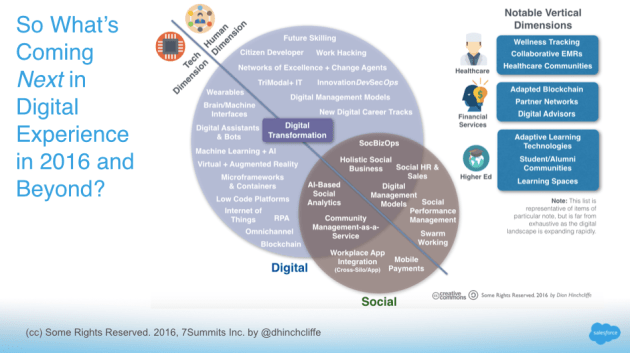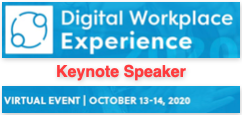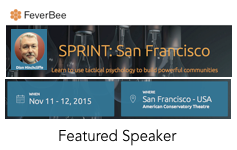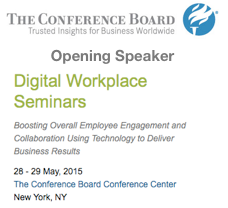Vital Trends in Digital Experience and Transformation in 2016
October 12, 2016 1 Comment
This year I was invited again to come to Dreamforce in San Francisco and present on the latest developments in digital experience and digital transformation for the conference’s Emerging Tech Trends track. Surprisingly well-attended given the satellite location of the track at the Hilton Union Square, having to prepare this session is always a good opportunity for me to go over my research in the last year and map out what’s likely going to happen next.
For myself at least, it’s clear that human change has become closely linked to and as important as digital change, so I have divided up the trends list in the last two years into a tech dimension and a human dimension.
The bottom line: How we think, work, and react as people has tremendous impact on the usefulness and effectiveness of emerging technology. It’s what separates the digital native from those who are just beginning the journey. For example, those not inclined to share information won’t get much use from the technologies and techniques of social business, nor will those who are uncomfortable and unused to spending time in virtual worlds be able to take advantage of the rich opportunities of virtual reality. And if we’re not changing our leadership skills to be more network-centric as opposed to hierarchy-centric, then much of the business value of digital experience and engagement is wasted on us. The list goes on.
What’s more, not only are we co-evolving with our tech, but we need to understand how we need to change just as much as the technology is changing. This is required in order to a) understand the art of the possible and b) to be able to access technology’s unique and historic new value propositions.
Another point I make early in the presentation is the technology is changing exponentially right now and has climbed into a rather steep part of the curve, yet our organizations just don’t change on the same curve. Instead, we change far more linearly, at best logarithmically (see slide 8.) That’s not to say that that enterprises can’t organize themselves to change much faster, but in order to do so we must employ fundamentally new ways to transform organizations. Certainly, some organizations are adapting faster and digital transforming more sustainably (see data on slide 4.)
Sidebar: I’ve recently been exploring what these new models for sustainable yet highly scalable models for digital transformation, even proving them out on client projects I’ve been working on over the last few years. The key seems to be a more network-based, decentralized, and emergent approach I’ve called a Network of Excellence.
Emergent Tech Trends Inputs
For this year’s round-up of emerging tech trends, in addition to original research, I used as inputs several items:
- My popular enterprise tech trends to watch for 2016, which has grown more and more crowded in recent years.
- Great round-ups on cloud computing, analytics, and other enterprise tech trends from folks like Louis Columbus.
- Gartner’s oft-maligned yet much followed emerging tech Hype Cycle for 2016.
- Last year’s list of vital trends, which shifted much more on the tech side than human side this year, further demonstrating that we (people) may be the long pole.
Major new additions to the list include digital assistants/bots/chatbots, blockchain, omnichannel, workplace app integration, and collaborative EMRs, along with significant tweaks in a variety of the existing trends.
You can see the whole deck with an overview of each trend on Slideshare. I’ll post any video that is produced as well.
Also, in other Dreamforce news, you can review my live blog of the main Dreamforce keynote as well as my current assessment this week of the Salesforce platform and ecosystem.
Additional Reading



























































